John Werry discusses collecting Victorian-era antique furniture, and gives advice to new collectors.
How did I get started collecting Victorian Furniture? Antiques are in my genes. My mother’s family were longtime antiquers and lived in a house built in the 18th Century. But it really hit me about five years ago. We’d go furniture shopping and come out of the store not liking anything, empty handed. We didn’t like the quality or the design of today’s furniture, and we were getting tired of our cookie-cutter house. So we decided to go out into the country to find a historic property that had some uniqueness and character and some land. All of a sudden we had this Victorian home that was built in 1887.
I fell in love with Victorian antiques because of the craftsmanship and because it was appropriate for the home, as opposed to Pottery Barn. Plus, the new furniture I had bought previously lost most of its value when I later tried to sell it. That’s not the case as long as you buy wisely with antiques.
Collectors Weekly: What do you collect now? Specific types of Victorian furniture?
Werry: We have two floors in our house that are almost 100% Victorian era antiques, so I’m at the point where I don’t need anything, I’m in the trade up phase. I’m always buying chairs and tables, they’re easy to throw in the back of the SUV and you can always find a corner somewhere to put them. I’m very interested in all the genres within Victorian, Renaissance Revival, Rococo, Eastlake, etc. I’m interested in all the makers during those time periods, the Victorian era is a long stretch of time so there are a lot of different sub styles.
Collectors Weekly: Who are some popular Victorian Furniture designers, and who are your favorites?
Werry: Herter Brothers, Allen and Brother, John Henry Belter, and J & JW Meeks are the names that are selling in the market and garnering the really big bucks these days, as well as Alexander Roux and R.J. Horner. My favorites are Merklen Brothers, John Henry Belter, Allen and Brother. Those are my top three. My favorites styles are Renaissance Revival, which was the third quarter of the 19th Century. Especially very showy, skillfully made pieces, lots of inlay and the use of ormolu and the mix of ebonized and non ebonized woods, and the addition of plaques, some of which are bronze or made by Sèvres.
I also like Rococo which is an earlier period 1850s/1860s, highly sinewy, curved lines, lots of use of C scrolls and naturalistic elements like flowers, vines, and leaves. I particularly like the pierce-carved Rococo where they have literally carved through to the other side of the wood so there are actually holes that highlight the vines and the flowers.
Collectors Weekly: When looking for antique Victorian furniture at a show or on eBay, what are some key things to watch for?
Werry: Unfortunately labels and stamps are very rare in Victorian furniture. The first thing to look at is visual appeal, assuming you’ve had the opportunity to look at a fair amount of Victorian furniture and you’re not just starting, you’re going to know a better piece relative to some of the more common, high volume, lower cost pieces. The visual impact is evident when you see a really good piece. It’s usually the condition combined with the skill of the manufacturer of the carving, the decorative elements, the quality of wood. Walnut would be a lesser wood compared to Rosewood, which is generally used on the higher end pieces, especially laminated Rosewood pieces.
Collectors Weekly: How can you make sure you’re identifying a piece of Victorian furniture correctly?

Kilian Brothers Pedestal
Werry: There are a lot of bad attributions out there. People selling Victorian, in order to get a higher price they want to put a maker’s name on it, and most of the time they don’t have a label. So attribution is basically an opinion. What I try to do with my blog is really dig into some of the historic documentation, like original catalogs and reference books, plus leverage the knowledge of other collectors. There are pieces you see over and over… when a furniture maker made something, they did it multiple times. It’s nice to be able to stand on firm ground, for instance to know that there’s another example in a certain museum and that there’s written documentation.
There’s a lot of work in trying to identify who actually made a piece. Some makers were really good at labeling their work, like George Hunzinger, he’s got stamps on almost all his furniture. Other than that, attributions are usually made on previous attributions. So if someone in 1920 decided this piece was made by so and so, that set a precedent for everyone else and for the next ninety years. What I’m trying to do is either validate or correct attributions through research.
Collectors Weekly: Rare Victorian is the name of your blog. What do you consider to be rare?
Werry: There’s plenty of mass produced Victorian furniture. Simple inscribed decoration Walnut furniture was made in mass quantities. I try to focus on the stuff that was hand crafted in the best materials and were bought by some of the most famous people in history. The Vanderbilts had the Herter Brothers decorate their New York home. Those are the really interesting pieces that end up in museums and the best collections in the world.
Collectors Weekly: What challenges do you face in going after these top tier pieces?

George Henkels Attributed
Werry: I don’t have an unlimited budget like many of the people who visit my site. Also, Victorian, for some time now, has not been one of the leading categories of antique furniture. A lot of the 50s and 60s furniture is popular right now and pre-Victorian furniture is more popular as well. Victorian’s the redheaded stepchild because of it’s over-the-topness, everybody pictures Victorian as crazy frilly, lacey, highly decorative, not really pertinent to today’s decorating style.
Since it’s out of vogue, that means that there’s fewer dealers focusing on it, and you have to look further, drive further, buy at auctions across multiple states and ship furniture back. I can’t just go down to a local antique store and find high end Victorian. I live near Philadelphia, the Valley Forge area, and everybody here collects and furnishes their homes a century or earlier than Victorian.
There are several auction houses that have a steady stream of quality Victorian that I follow. I have a lot of searches on eBay, constantly scanning for new additions, I do monitor eBay pretty heavily. I also try to scan Craigslist, but I’ve never had any luck with getting anything of any value on Craigslist, it’s always kind of mainstream, poor quality, bad condition, or misidentified.
Collectors Weekly: What advice would you have for someone just starting out collecting Victorian furniture?
Werry: Grab a couple of basic books on Victorian antique furniture and get familiar with what that era of furniture looks like; how to identify it at a very basic level and what the various periods are. Initially, focus on one genre such as Eastlake furniture or Rococo and get deeper in that area. I recommend going to auctions, because at stores you may see only a couple of pieces. Auction houses have better flow, they sell thousands of items every week. There’s usually an auction house nearby that has more Victorian than other houses, so go sit there (not necessarily bid) to get a feel for what’s out there and the prices people are paying.
I’d also say find someone, maybe a family member or friend, or a dealer somewhere that’s really familiar with Victorian antiques and pick their brain and try to learn some things that they’ve learned over the years.
Collectors Weekly: Are there any specific books or other websites you’d suggest?
Werry: Go to some of the auction house sites online who have their past auctions archived so you can scan auctions back several years. A lot of them have the photos, condition reports, and the actual sale prices in there. I also have a forum site, www.victorianforum.com, that’s a message board where anybody can post questions or chime in on conversations already being had between different members about Victorian homes and Victorian furniture.
Collectors Weekly: Anything else you’d like to mention about Victorian Furniture?
Werry: I’d like to dispel the myth that Victorian furniture all looks the same. There are so many different types, a lot of different eras and styles such as Egyptian Revival or Modern Gothic. If you have this idea that Victorian antiques are frilly and look a certain way, you may be surprised at the different styles. If you don’t like one of them, you might like another.
One of the most famous designers from the Victorian Era was Charles Eastlake, and he absolutely hated Rococo, which is mid 1850s Victorian. Eastlake’s book on household taste brought forth the Eastlake era of Victorian furniture design. So the message is that Victorian encompasses a lot of different eras and styles, and with a little investigation and looking at the full panorama, there’s probably something there for everyone.
For example, here are some examples of the primary styles of Victorian furniture:
Gothic Revival – (approx. 1830-1860) – Think churches and the design motifs found there and you have a good feel for this furniture style – design elements such as arches, quatrefoils, trefoils, spires, crockets
Rococo Revival – (approx. 1840-1865) – High-style furniture of French influence marked by use of naturalistic flora and fruit as well as C-scrolls and S-scrolls. Early pieces may have used mahogany, but common Rococo often used Walnut, while the top-end leveraged Rosewood. Laminated Rosewood construction is usually a good first sign of a possibly valuable piece.
Renaissance Revival – (approximately 1860-1890) – Renaissance Revival reverses the feminine elegance of Rococo around the time of the Civil War by espousing masculine arches, cartouches, animal and human figures, inlaid panels, burl panels, gilt incising, and ormulu mounts. Subgenres include Egyptian Revival and Neo-Grec.
Eastlake and Aesthetic Movement – (approximately 1880-1900) – A movement away from the showy complicated designs of prior eras, this furniture has stylized natural elements (flowers, leaves), shallow incisings, and turnings. On finer pieces, marquetry, inlay and veneering can also be found.
Collectors Weekly: Thanks John, and good luck finding great pieces this summer!
(All images in this article courtesy of John Werry.)



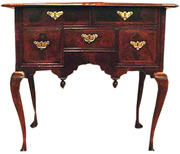
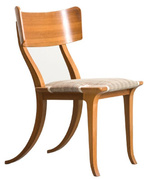 For the Love of Danish Modern Furniture
For the Love of Danish Modern Furniture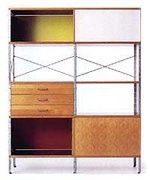
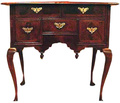 The International Influences of Buffalo Furniture
The International Influences of Buffalo Furniture For the Love of Danish Modern Furniture
For the Love of Danish Modern Furniture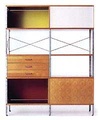 Eames, Nelson, and the Mid-Century Modern Aesthetic
Eames, Nelson, and the Mid-Century Modern Aesthetic Victorian FurnitureAntique Victorian furniture refers to pieces made during the reign of Queen…
Victorian FurnitureAntique Victorian furniture refers to pieces made during the reign of Queen… Victorian EraThe Victorian Era, named after the prosperous and peaceful reign of England…
Victorian EraThe Victorian Era, named after the prosperous and peaceful reign of England… Mari Tepper: Laying it on the Line
Mari Tepper: Laying it on the Line Nice Ice: Valerie Hammond on the Genteel Charm of Vintage Canadian Costume Jewelry
Nice Ice: Valerie Hammond on the Genteel Charm of Vintage Canadian Costume Jewelry How Jim Heimann Got Crazy for California Architecture
How Jim Heimann Got Crazy for California Architecture Modernist Man: Jock Peters May Be the Most Influential Architect You've Never Heard Of
Modernist Man: Jock Peters May Be the Most Influential Architect You've Never Heard Of Meet Cute: Were Kokeshi Dolls the Models for Hello Kitty, Pokemon, and Be@rbrick?
Meet Cute: Were Kokeshi Dolls the Models for Hello Kitty, Pokemon, and Be@rbrick? When the King of Comedy Posters Set His Surreal Sights on the World of Rock 'n' Roll
When the King of Comedy Posters Set His Surreal Sights on the World of Rock 'n' Roll How One Artist Makes New Art From Old Coloring Books and Found Photos
How One Artist Makes New Art From Old Coloring Books and Found Photos Say Cheese! How Bad Photography Has Changed Our Definition of Good Pictures
Say Cheese! How Bad Photography Has Changed Our Definition of Good Pictures Middle Earthenware: One Family's Quest to Reclaim Its Place in British Pottery History
Middle Earthenware: One Family's Quest to Reclaim Its Place in British Pottery History Fancy Fowl: How an Evil Sea Captain and a Beloved Queen Made the World Crave KFC
Fancy Fowl: How an Evil Sea Captain and a Beloved Queen Made the World Crave KFC
I own a antique Eastlake victorian corner cabinet, which was aquired at an auction approx. 60 years ago. It was believed that it may have been in the Martin Van Buren home in Kinderhook, NY at one time. Can you give me any idea on where to research this, as I would like to sell it. Thank you
THE EDGE OF VICTORIAN
REGARDS TO THE HOOSIER MANUFACTURING COMPANY
WOULD YOU KNOW OF ANY EVENT THAT WOULD MAKE HOOSIER MANUFACTURING CO.
CREATE A SPECIAL OAK CABINET WITH A METAL TAG PATENT DATE OF MAY 15 1908
COMPLETE WITH NAMED AND DATED HARDWARE OF FEBRUARY 22 1910
FIRST OWNER – CORI LEE MCCLAIN BORN 1883 –
SECOND OWNER – M. MCCLAIN BORN 1909
THIRD AND CURRENT OWNER – JACKIE MCCLAIN BORN 1946
KIND REGARDS
JACKIE MCCLAIN
Hi-I’m hoping you can provide me with some direction to determine if the console table I have is an authentic piece of antique Victorian furniture.
It was part of a dining room set that included a table, armoire and a number of chairs.
It is 77″ long, 21″ deep and 36″ high. It contains three drawers and the bottom right side draw is stamped Mohlhenrich in gold. I have done numerous web searches and all I can determine is there was a furniture company in Baltimore at the turn of the century. But that is where the search ends. The center draw has an inlaid floral design. Not knowing too much about antiques I am at a loss for further describing all the intricate scroll work and spires that form the perimeter and base.
Any info would be appreciated.
Thank you,
Eileen Telesca
I have a wlanut rococco parlor table, with a handwritten signature underneath that is signed S.S. Stevens and Sons, Baltimore, MD. (No date) My research shows there was a Samuel Small Stevens who lived from 1807 -1875 who was in the manufacture of furniture with his sons. Can you provide any more information. I can send a photo of the signature if you like.
My brothers and I were cleaning out the family home after our parents passed when someone noted that there was a Mohlhenrich golf leaf mark on almost every piece of the ten piece dining room furniture set that they had. We know they bought it from the estate of someone in the city of Washington DC and after checking came up with a connection to the name in Baltimore, MD but nothing beyond that. Is there someone or some place we can send email pictures of the china cabinet, serving table, buffet, etc. in order to learn what we have found or have someone point us in the proper direction?
I have a large chest with MOHLENRICH stamped in gold in the top drawer.
Portions have been painted over the original finish by previous owner.
I am considering refinishing this piece and wonder if the expense is worth the investment.
Any information on this maker?
I have an old Victorian Rococo Parlor Chair, I do not know the origin date. It has a floral pattern and has no arms. There is the name Victorian on the front left leg. I cannot find anything on the net that looks like it. Photos upon request
I inherited a cylinder top secretary desk. There is the roll top desk (burled, 3 side drawers, one full length draw, ledger compartment, has original keys,and most of the hardware), the 2 doored book case (with original old glass with bubbles)has all original shelves and moveable wood “brackets” and a removable triangular decorative piece on top of the crown molding type frame piece. The decorations are simple semetric swirls at the four corners of the bookcase. I say semetric, the 2 at the top go opposite directions, but the bottom ones go the same way — it looks as if it was an “oops”. This roll top secretary came to me from my grandmother’s house. It belonged to my step-grandfather’s 1st wife (my grandmother was wife #3). The house was in rural Louisville, KY and the first wife’s name was Emma Pegram. Her family must have had a business as there were old ledger books in the desk containing data about shipments of grain. I believe this piece is an Eastlake design. Of course, I have no idea whether it is an “authentic” Charles Eastlake design or not. What should I look for and whom shall I contact for and assessment? I am not interested in an appraisal, unless it turns out to be authentic (which is doubtful). I live outside of Charleston, SC. Is there someone in this area qualified to do an assessment for me?
Thanks, Suzi Emily, Ridgeville, SC
Eileen Telesca,
This was built by my great grandfather in a small factory in the Inner Harbor of Baltimore probably around 1910. I’d love to see a picture of it.
Mo
We are planning to restore my grandfather’s c. 1890 Hunzinger Platform Rocker. In a move from NJ to VT the detached platform and spring were lost. Have you any suggestions about where we might find the dimensions to construct a platform, and about where we might find the special spring or a substitute that will work?
I received a tall cabinet from my Great Grandparents farm In Baltimore . It has A & H Jenkins of Baltimore on it . I know that it was in the house since at least 1920 according to my Grandmother so I don,t know the age of it . It was given to my Great Grandparents from someones home.They used it as a clothes closet.It has double doors and one side has drawers and the other side they hung clothe in. Do you have any information on this .
I recently discovered a wonderful and what I believe to be rare American Modern Gothic sideboard made of walnut at an antiques shop. The piece is nearly 94″ tall and 60″ wide and features numerous minton tiles on the top and inset in door panels. Piece appears to be in very good condition with original finish. Price is around $3,400 (reduced and on storewide sale) with tax and seems to be an incredible buy. Am I crazy to pass this up if I can afford it? Can e-mail a picture.
I picked up a large china cabinet several years ago and never used it. My wife deceided that she wanted to bring it upstairs and use it to store her glassware. The cabinet is a little over six feet tall and ornate with two glass doors with a key lock, side glass panels and a single drawer at the bottom also with a key lock. We found the name Mohnhenrich made mark in gold letters at the bottom of the drawer.Any information in reference to this would be greatly appreciated. Thanking you in advance.
Guest column an interview with victorian furniture collector john werry.. Outstanding :)
Eileen, Carol, Sam and Robert:
John George Mohlhenrich was my great-grandfather, born in Baltimore in 1865. He became president of the Reliable Furniture Manufacturing Company and later renamed it to the Mohlhenrich Furniture Company. The Mohlhenrich Furniture Company had showrooms in Baltimore, Philadelphia, Wisconsin, and New York. One of the original buildings stills stands in Baltimore on President St., with the Mohlhenrich name faded, but visible, on the side.
Here’s a link to an advertisement from 1921:
http://www.amazon.com/1921-Mohlhenrich-Furniture-Dining-Chair/dp/B005DH4KHE/ref=cm_cr_pr_product_top
More ads like this can be found in old publications from the early 1900’s.
Tom,
I’m pretty sure the building is gone. I joined the Mohlhenrich family in 2004, in Baltimore. Our rehearsal dinner was around the corner from where the building had been; now a parking garage. Of course, that’s assuming family memory of the original location was accurate.
BTW, the original of the ad you placed is hanging above my computer.
And today we picked up our first piece of Mohlhenrich furniture: a china cupboard.
I have an old Victorian parlor chair exactly like the one pictured above in this article. Would love to know more about it, the maker and its value.